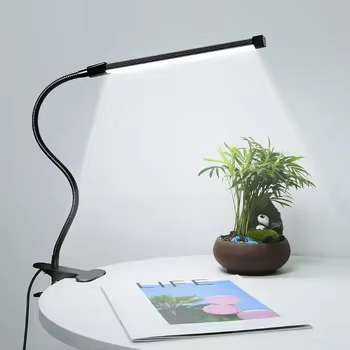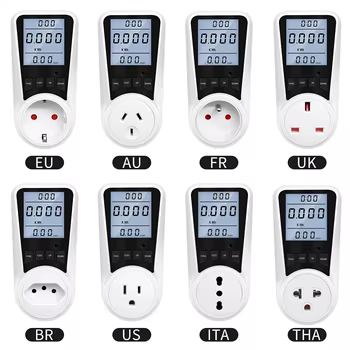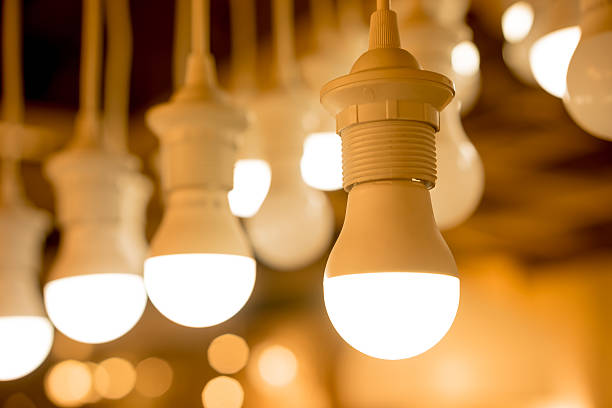How to Reduce Energy Consumption in Your Home Office
As remote work becomes the new normal, home offices are now an integral part of many households. However, the increased use of computers, lighting, heating, and cooling systems can significantly impact energy consumption. Reducing energy use in your home office not only lowers your electricity bills but also contributes to a more sustainable environment. Here’s a comprehensive guide to making your workspace more energy-efficient without compromising productivity.
Table of Contents
1. Choose Energy-Efficient Equipment
Invest in Energy Star-Certified Devices
Energy Star-rated devices, including computers, monitors, printers, and lighting, consume significantly less power compared to standard models. When upgrading your home office setup, opt for devices with this certification to save energy without sacrificing performance.

Pro Power Save Electricity Energy Saver 90V-250V Home Office Electricity Saving Box US/EU/UK Plug Stable Voltage Power Saver
Use Laptops Instead of Desktops
Laptops use up to 80% less energy than traditional desktop computers. If your work doesn’t require a high-powered desktop setup, switching to a laptop can be a simple yet effective way to cut down on electricity consumption.
Upgrade to LED Monitors
LED monitors reduce energy consumption unlike older LCD or CRT monitors. If you are still using an outdated screen, upgrading to an energy-efficient LED display can make a noticeable difference in your energy usage.
2. Optimize Lighting Usage
Utilize Natural Light
Position your desk near windows to maximize natural daylight. This reduces the need for artificial lighting during the day, helping you save energy while creating a more pleasant and productive workspace.
Switch to LED Bulbs
LED bulbs use about 75% thus reduce energy consumption and last up to 25 times longer than incandescent bulbs. Replacing traditional bulbs with LEDs in your office can lead to significant energy savings.
Use Task Lighting
Instead of lighting up the entire room, use desk lamps with energy-efficient LED bulbs to focus light where you need it most. This reduces overall electricity consumption while maintaining optimal lighting for work.

LED Reading light clip type desk lamp Study student dormitory table lamp bedroom desktop bedside lamp eye protection Clamp lamp
3. Manage Computer and Device Power Consumption
Enable Power-Saving Mode
Most computers and monitors have built-in power-saving settings. Activate sleep mode or adjust settings to reduce energy consumption when devices are idle.
Turn Off Devices When Not in Use
Many people leave computers, printers, and other office equipment running even when not in use. Make it a habit to turn off these devices at the end of the workday. Using a smart power strip can help by cutting power to multiple devices simultaneously.
Unplug Chargers and Peripherals
Chargers, external hard drives, and other peripherals continue to draw power even when not in use. Unplugging these devices when they’re not needed can reduce energy consumption.
4. Optimize Heating and Cooling
Adjust Thermostat Settings
During colder months, lower your thermostat a few degrees and wear warm clothing to stay comfortable. In the summer, use fans or open windows for ventilation instead of relying heavily on air conditioning.
Seal Drafts and Insulate Windows
Poor insulation can lead to unnecessary heating and cooling costs. Use weather stripping or thermal curtains to seal gaps around windows and doors, keeping your office at a comfortable temperature reduce energy consumption.
Use a Smart Thermostat
A smart thermostat can automatically adjust temperature settings based on your schedule, ensuring energy efficiency while keeping your home office comfortable.
5. Reduce Paper and Printing Waste
Go Paperless
Digitizing documents reduces the need for printing, saving energy and resources. Use cloud storage, digital notes, and e-signatures to minimize paper use.
Use Energy-Efficient Printers
If printing is necessary, opt for an Energy Star-certified printer and set it to “double-sided printing” to conserve paper.

Turn Off Printers When Not in Use
Printers consume standby power even when idle. Turn them off to reduce energy consumption or unplug them when they’re not needed to avoid unnecessary energy consumption.
6. Optimize Internet and Network Usage
Use an Energy-Efficient Router
Modern routers with power-saving modes consume less electricity while maintaining a strong connection. Consider upgrading if your router is outdated.
Schedule Automatic Downtime
If your router supports it, schedule automatic shutdowns during non-working hours to reduce energy consumption when you’re not working.
Minimize Streaming and Unused Tabs
Streaming videos and keeping multiple browser tabs open can strain your computer and increase energy consumption. Close unnecessary applications and tabs to optimize performance and reduce power consumption.
7. Adopt Smart Energy Management Practices
Use Smart Power Strips
Smart power strips automatically shut off power to devices that are not in use, reducing standby energy consumption.
Set Timers for Electronics
Using timers for lamps, heaters, or other devices ensures they are not running longer than necessary.
Monitor Energy Usage
Energy monitoring devices can help you track how much electricity your home office consumes. This information allows you to identify areas where you can improve efficiency and cut back on unnecessary usage.

8. Incorporate Green Office Practices
Add Plants to Your Workspace
Indoor plants improve air quality and can help regulate humidity, reducing the need for additional heating or cooling.
Use Recycled and Sustainable Office Supplies
Choosing recycled paper, refillable pens, and other sustainable office supplies minimizes your environmental impact.
Adopt a Minimalist Approach
A clutter-free office with only essential devices and equipment reduce energy consumption and creates a more productive work environment.
Conclusion
Creating an energy-efficient home office is not only beneficial to reduce energy consumption but also contributes to a more sustainable future. By making small adjustments like using energy-efficient devices, optimizing lighting, managing power consumption, and adopting smart office practices, you can significantly cut down on energy use. Implement these changes today to enjoy a greener, cost-effective workspace without sacrificing productivity.
Related Post
How to use natural ventilation to keep your office cool.


1 thought on “How to Reduce Energy Consumption in Your Home Office”
Comments are closed.